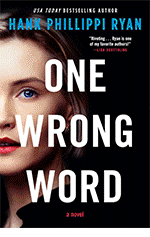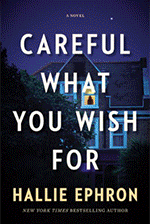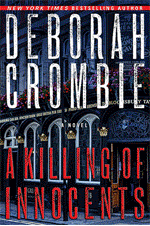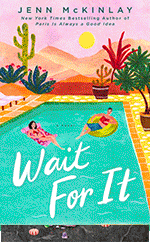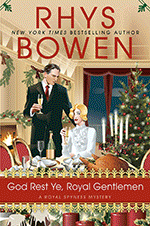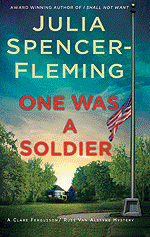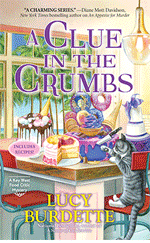LUCY BURDETTE: When I spotted the cover of MA McLaughlin’s new book and then realized she’s a Crooked Lane author, I knew I had to get her on the blog. Read on for a wonderful backstory…
M. A. MCLAUGHLIN: Poetry and fashion may seem unlikely bedfellows, but au contraire—they have more in common than you might think.
I became immersed in poetry when I was in fifth grade, and my teacher read Edgar Allen Poe’s “Annabelle Lee” to the class; her resonant voice sang out with the long vowels and flowing lines. I was enchanted. The verse sounded like music to me (later I discovered how deeply Poe focused on the sound of poetry, often more than the content), and it set me on the path of delving into every poet I could find as I moved into high school, especially the beautiful work of nineteenth-century poet, Christina Rossetti. She became not only an inspiration for me but a source of curiosity because she wrote both delicate lyrics typical of a Victorian female poet and erotically-charged sonnets not-so-typical of a woman of her era.
But more on that later.
While I was indulging my inner poetry nerd, I also developed my other obsession: antique clothing. And it began from an unlikely episode when I was eighteen. My mother’s Aunt Lily passed away in her late seventies—unmarried and still living in her downtown home that was full of musty old furniture, tons of glassware, and hand-painted figurines. Outdated and unappealing stuff. Then, when Mom and I were sorting through my great-aunt’s things, I spied a black and white picture of her in a lace dress when she was young, posed holding a rose with her waist-length blond hair partially covering her face. Definitely more interesting. At the end of the day, we opened her cedar trunk where we found carefully-preserved, antique clothing and hand-embroidered lace handkerchiefs, along with . . . a wedding certificate!
It turned out my great-aunt had a secret marriage, and the truth had been hidden away for years—with her dresses.
Needless to say, we were intrigued—and curious. Why did my great-aunt hide her marriage and what caused her to put those other items in the trunk? Mom questioned relatives to dig around for the facts about the marriage, even as I turned to the textile pieces with my speculations, examining the fabric and hand-stitched seams. Did those things in the trunk hold some particular significance? Had her husband given them to her? Had she ever worn the clothing?
Unfortunately, I never found the answer as to why my great aunt kept her marriage secret (my mom and I did learn that some of the family knew about it), or why she had chosen to place those particular items in her trunk. It all remained a mystery, but I kept the clothing as the beginning of my vintage collection—and filed the incident away.
Fast forward to 2021 when I started conceptualizing a novel with Christina Rossetti as a character. In spite of studying and teaching her poetry for decades, I found something tantalizingly elusive about her. Although she was a prominent poet during the nineteenth-century and part of a very famous family that included an Italian revolutionary father and charismatic painter/poet brother, Dante Gabriel, Christina remained a private figure in her personal life. However, one incident in her life seemed notably unusual: in 1865, she took a three-week trip to northern Italy and, afterwards, returned to London, broke off relations with her suitor, and wrote a passionate sonnet sequence called the Monna Innominata—the “hidden woman.” She never married.
I had always wondered if something happened on that fateful journey which changed the course of Christina’s life and decided to create a historical mystery about what might have occurred.
As I plotted out my book, I wanted to add a second narrative in post-WWII Verona—the character who would delve into Christina Rossetti’s secrets. But how? That’s when the long-ago discovery of my great-aunt’s trunk popped up in my mind, prompting me to conjecture what if Christina had left behind Victorian dresses with the clues to her puzzling time in Italy? Textiles are historical artifacts, too. All I needed to add was a costume curator heroine with an obsession for Victorian poets and antique clothing. Just like me.
Thus, fashion and poetry melded into an amazingly creative project. And it all started when my mom and I opened my great-aunt’s trunk that, like a Pandora’s box, whispered with echoes from the past.
What an incredible find.
How about you? Have you ever stumbled upon something from an ancestor that set your imagination on fire?
LUCY: Leave a comment on our Reds and Readers Facebook page to be entered in the drawing for this book!
M. A. McLaughlin Bio:
Marty Ambrose-McLaughlin is an award-winning, multi-published author, including a historical mystery trilogy set around the Byron/Shelley circle in nineteenth-century Italy, which earned starred reviews in Publisher's Weekly, as well as a gold medal for historical fiction in the Florida Writers Association's Literary Palm Award. She completed her M.Phil. at the University of York (England) and teaches nineteenth-century British literature, composition, and fiction writing at Florida Southwestern State College. She has also given numerous workshops in the U.S. and abroad on all aspects of creating/publishing a novel, and is a member of The Byron Society, Historical Novel Society, Florida Writers Association, and Women's Fiction Writers Association. Her latest novel, The Lost Dresses of Italy, will be published by Alcove Press in February, 2024.
About The Lost Dresses of Italy
Grieving textile historian, Marianne Baxter, travels to post-WWII Verona, Italy, to assist with an exhibit of long-lost Victorian dresses which once belonged to Pre-Raphaelite poet, Christina Rossetti; but, as Marianne uncovers the garments’ secrets, she finds herself in the midst of a far-reaching conspiracy of lies and murder.

.jpeg)







